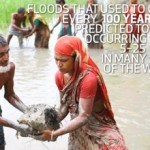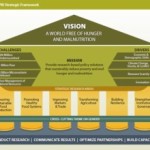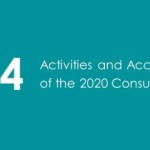If you can’t measure it, you can’t manage it.
In applying a popular business adage to an international development-based resilience framework, researchers Chris Barrett and Derek Headey the case for long-term, high-frequency measurement and analysis of individual, household, and community resilience in the world’s most vulnerable regions. Their conference brief and related 2020 conference paper outline what such a framework would look like and what types of investments are needed to effectively define and measure resilience.
According to the authors, the development resilience framework is defined by the following characteristics, each of which offers distinct advantages in understanding resilience:
- Resilience incorporates dynamic concepts of human well-being, such as moving in and out of poverty, hunger, and malnutrition;
- resilience relates to the capacity to maintain well-being in the face of risk brought on by a range of shocks and stressors, including drought, rising food prices, loss of income, civil unrest, etc.; and
- the framework focuses attention on the interplay of social, economic, and ecological systems.
What do the characteristics outlined above imply for the task of measuring and analyzing resilience? First, resilience must involve measurements that are collected at a higher frequency than the current norm of every three to five years. The authors cite the example of Helen Keller International’s (HKI) Nutrition Surveillance Program (NSP) in Bangladesh wherein the application of bimonthly surveys showed that child wasting (a measure of undernutrition) doubled every monsoon season. Such a pattern, is not evident using less frequent surveys, as is common practice for collecting data on many food and nutrition security related indicators. Second, measuring resilience requires repeated measures over the long term, since the concept of resilience involves an acute understanding of longer term stressors that create vulnerabilities to shocks and the ability to withstand or bounce back from them. Third, resilience needs to be measured at multiple levels—for individuals, households, and communities—and these units must be measured both individually and as an integrated system. Finally, such efforts will require context-specific measurement across diverse environments and the proper mix of quantitative and qualitative approaches.
As far as the question of where to focus resilience measurement efforts, Barrett and Headey propose a multi-country system of sentinel sites in the world’s most vulnerable regions. In examining data from five core indicators of vulnerability at the national level, the authors compiled a list of extremely and highly vulnerable countries (see table below). These classifications are based on country rankings across the following indicators: child stunting, child wasting, infant mortality, exposure to natural disasters, and dependence on emergency assistance.
As with any new proposed system for large-scale, long-term measurement efforts, the question of Who will fund and implement it? is paramount. The authors propose a broad consortium of bilateral foundations, multilateral organizations, national and subnational governments, major international and local nongovernmental organizations (NGOs), and leading international research institutions to lead the charge. The consortium’s first task will be to identify which countries and regions most need sentinel sites since focusing on the most vulnerable countries and subnational regions will help to contain costs. Next, the consortium will have to work to establish partnerships with national governments in order to secure long-term resilience monitoring, analysis, and capacity building efforts. They also will need to contract with local institutions on the ground in order to coordinate the design and distribution of surveys as well as the collection and analysis of data. Data analysis and the dissemination of research findings, meanwhile, represents a key factor in such an undertaking’s success since, as the authors state, “lack of analysis and timely dissemination has arguably been the Achilles’ heel of many past efforts.”






